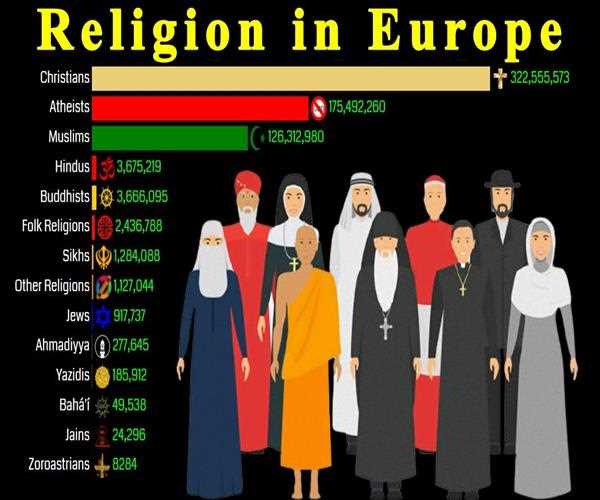Europe is one of the most religiously diverse places on the planet. With a population of over 740 million people, Europe is home to a wide array of religious traditions, beliefs, and practices. The religious breakdown of Europe is incredibly complex due to its long history of religious diversity. While some countries are predominantly dominated by one religion, such as the Roman Catholic Church in Italy, other countries are more diverse, with multiple religions being practiced.
When it comes to understanding the religious makeup of Europe, the facts can be confusing and overwhelming. With its long history of religious influence and diversity, Europe is home to a wide variety of religious beliefs and practices. From Christianity to Judaism, Islam to Buddhism, Hinduism to Sikhism, and everything in between, Europe has a diverse faith landscape.
So, what is the religious breakdown of Europe? Let’s take a look.
Roman Catholicism is the largest religion in Europe, with around 39% of Europeans identifying as Catholic. Christianity is the second-largest religion in Europe, with around 33% of Europeans identifying as Christian. This includes Protestants, Eastern Orthodox and other Christian denominations.
Christianity is the dominant faith in Europe, with the majority of Europeans identifying as Christian. According to the Pew Research Center, roughly 68% of Europeans identify as Christian. This includes both Catholic and Protestant denominations. Additionally, there are a variety of other Christian denominations present in Europe, such as the Eastern Orthodox Church, Anglicans, and Mormons.
Islam is the third-largest religion in Europe, with roughly 8% of Europeans identifying as Muslim. This includes both Sunni and Shia branches. Additionally, there are a variety of other Islamic sects present in Europe, such as Sufism and Ahmadi Islam.
Judaism is the fourth-largest religion in Europe, with roughly 2% of Europeans identifying as Jewish. This includes both Ashkenazi and Sephardi branches. Additionally, there are a variety of other Jewish denominations present in Europe, such as Reform, Conservative, and Orthodox Judaism.
Buddhism is the fifth-largest religion in Europe, with roughly 1% of Europeans identifying as Buddhist. This includes both Theravada and Mahayana branches. Additionally, there are a variety of other Buddhist denominations present in Europe, such as Zen and Pure Land Buddhism.
Hinduism is the sixth-largest religion in Europe, with roughly 1% of Europeans identifying as Hindu. This includes both Vaishnava and Shaiva branches. Additionally, there are a variety of other Hindu denominations present in Europe, such as Shaktism and Vedanta.

Sikhism is the seventh-largest religion in Europe, with roughly 0.2% of Europeans identifying as Sikh. This includes both Nanakpanthi and Siddhant branches. Additionally, there are a variety of other Sikh denominations present in Europe, such as Gurmat and Nirankari.
In addition to the major religions mentioned above, there are also a variety of other religious beliefs and practices present in Europe. These include Atheism, Agnosticism, and various indigenous beliefs and practices.
The religious breakdown of Europe is constantly changing as people come and go, migrate, and settle. Immigration has led to an increase in religious diversity, with a greater number of people practicing different religions. In some countries, such as the UK, there has even been an increase in the number of people who identify as non-religious.
In conclusion, Europe is a multi-faith, multi-cultural continent with a wide variety of religious beliefs and practices. While Christianity is the dominant faith, there are also significant populations of Muslims, Jews, Buddhists, Hindus, and Sikhs, as well as a variety of other religious beliefs and practices present in Europe.